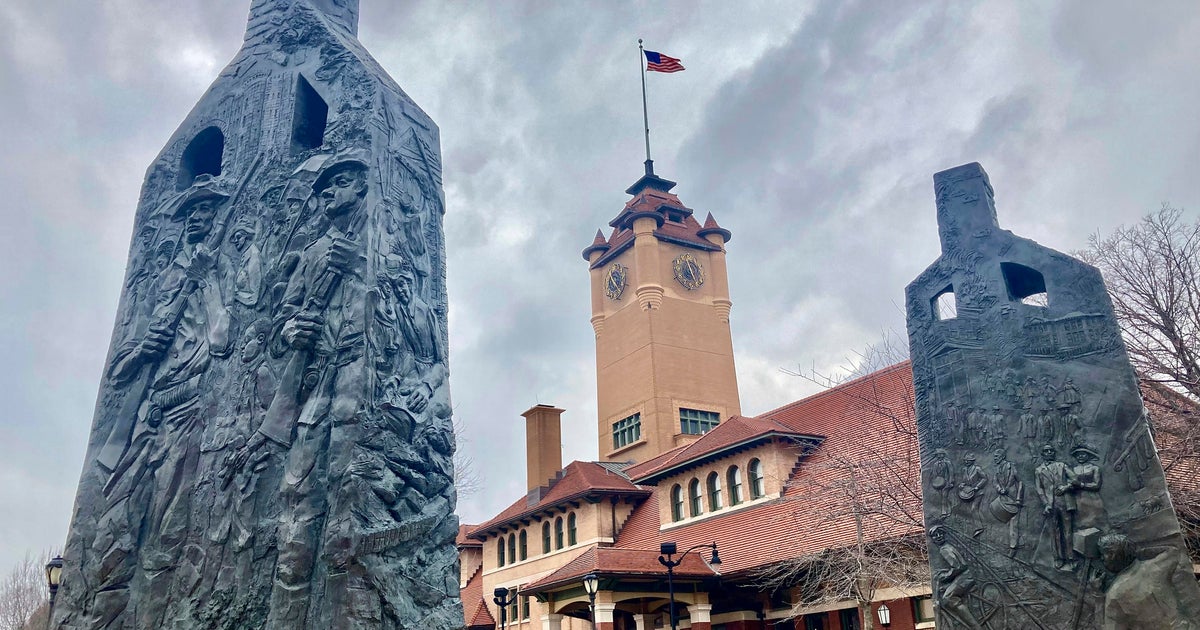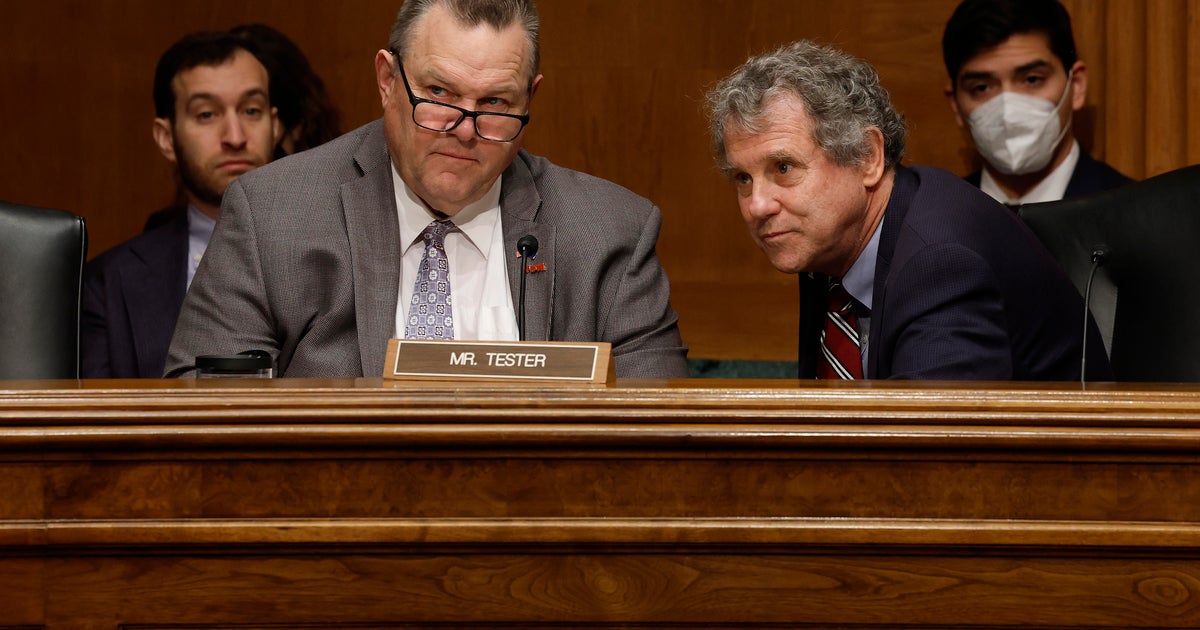Hurricane Ernesto forecast to bring "strong winds, dangerous storm surge" to Bermuda
Hurricane Ernesto is approaching the North Atlantic island of Bermuda, the National Hurricane Center said on Friday, carrying with it "strong winds, dangerous storm surge and life-threatening flooding" that is expected to begin by the end of the day. The storm, which knocked out power to hundreds of thousands in the Caribbean earlier this week, is now about 65 miles southwest of the island nation.
In its latest update, the Miami-based weather prediction center said that Ernesto is moving northeast at about 13 mph and that it's expected to slow down even more on Saturday morning when its center is expected to pass near or over Bermuda. It is then forecast to pass near or east of Newfoundland on Monday night.
Sustained winds were about 90 mph, making it a Category 1 hurricane, weakening slightly from its Category 2 status earlier in the day, when its sustained winds reached 100 mph. Ernesto's hurricane-force winds were extending about 70 miles from Ernesto's center, while tropical storm-force winds extended up to 275 miles.
The hurricane center noted that "some gradual weakening is forecast over the next day or so, though some re-intensification is possible late in the weekend."
Tropical storm conditions had already picked up in Bermuda Friday. Currently, Bermuda is expected to be hit with up to 9 inches of rain, an amount that "will likely result in considerable life-threatening flash flooding, especially in low-lying areas" the center said.
Michael Weeks, Bermuda's national security minister, told CBS News Friday that the hurricane will get much closer and stronger than officials had thought just 24-hours prior.
"This storm is probably going to be right on top of us, closer than storms have in the past," Weeks said.
With just hours to go before landfall, generators, flashlights and generators were being snapped off shelves at one hardware store, while Bermuda's largest grocery store was packed with people preparing for the worst.
"The best thing to do is obviously get your supplies beforehand," shopper and Bermuda resident Lorenzo Cooke told CBS Ness.
Cooke said that in any hurricane, the best resource is often Bermudians themselves.
"Obviously, a neighbor is a helping hand at all times," Cooke said.
Captain Jeremy Fowler secured the Pescador, an 80-foot sport fishing boat in a protected area of Bermuda's harbor. He lost an engine, but is riding out the storm with his friend Brian Alford.
"Feeling pretty confident, but still optimistic," Fowler said. "Paying attention to what's going on. It's blowing the tops off the waves in the harbor here. I see some of the seawalls starting to get pretty deep."
Along with Bermuda, the hurricane center said that swells generated by Ernesto were affecting portions of the Bahamas and the East Coast of the U.S. The swells were also forecast to reach portions of Atlantic Canada by late Saturday.
"Life-threatening surf and rip current conditions are likely in these areas during the next couple of days," the hurricane center wrote.
A rush of people have been trying to leave Bermuda. Michael Vanderbilt of Arlington, Virginia, who cut his trip to Bermuda short, was among the travelers waiting in long lines at L.F. Wade International Airport Thursday.
"I was here for a week of vacation, and I'm just taking the opportunity to leave a little early so I don't get caught up in the aftermath of the storm," Vanderbilt told CBS News.
The storm's categorization is based on the Saffir-Simpson Wind Scale, which only accounts for wind speed and not the tropical cyclone's size, which the National Hurricane Center said is "large." It also doesn't account for the amount of precipitation the storm system holds or its moving speed, both of which can be disastrous. Slow-moving tropical cyclones can increase the amount of rain, storm surge and flooding a region experiences.
Ernesto already caused potentially life-threatening conditions in Puerto Rico and the U.S. Virgin Islands earlier this week. It passed north of the region as a tropical storm that still managed to knock out power to hundreds of thousands of residents. At one point, 23 hospitals were operating on generators. Schools and numerous roads were also closed.
A spokesperson for Puerto Rico's electricity provider, LUMA Energy, told CBS News that at the outage's peak, 750,000 customers were without power. As of 7 p.m. EDT Friday, that number had dropped to about 255,000. Some 1,600 crew members were working as quickly as possible to repair the power grid.
Residents in Puerto Rico were still coping with the damage Thursday. In Fajardo, a town on the northeast corner of the island, debris piles from damaged businesses were growing.
The U.S. Virgin Islands had about 46,000 out of power at one point on Wednesday — nearly all customers. As of Friday night, that number was down to a little more than 5,700, according to PowerOutage.us.
Ernesto developed just days after Debby finished its move along the U.S. East Coast, where it left at least eight people dead, including children, as a Category 1 hurricane-turned-tropical storm.
Rivers across Puerto Rico were swollen after nearly 10 inches of rain.
Officials were forced to open flood gates at a dam along the La Plata River. Sirens warned residents in nearby municipality of Toa Baja to evacuate their homes in case of flooding.
Puerto Rico's power grid was wiped out in 2017 by Hurricane Maria, which slammed the island as a strong Category 4 storm.
"The government today is much better prepared," said Juan Saca, president and CEO of LUMA Energy. "… We have a plan that you can go into our website and take a look at the plan."
President Biden approved an emergency declaration for Puerto Rico, the White House said Tuesday night, authorizing FEMA to help with storm recovery.
Ernesto is the fifth named storm so far of the Atlantic hurricane season, which has already proven to be historic after Beryl reached record strength at the beginning of the season in above-average temperatures of the Gulf of Mexico.
NOAA has predicted an above-normal season, with 17-25 named storms, eight to 13 hurricanes, and four to seven major hurricanes.
The fifth-named storm typically doesn't form until Aug. 22, according to NOAA.
Editor's Note: Due to an editing error, an earlier version of this story reported 975,000 customers had lost power in Puerto Rico, but that was the number of customers who still had power, according to Puerto Rico's electricity provider.






